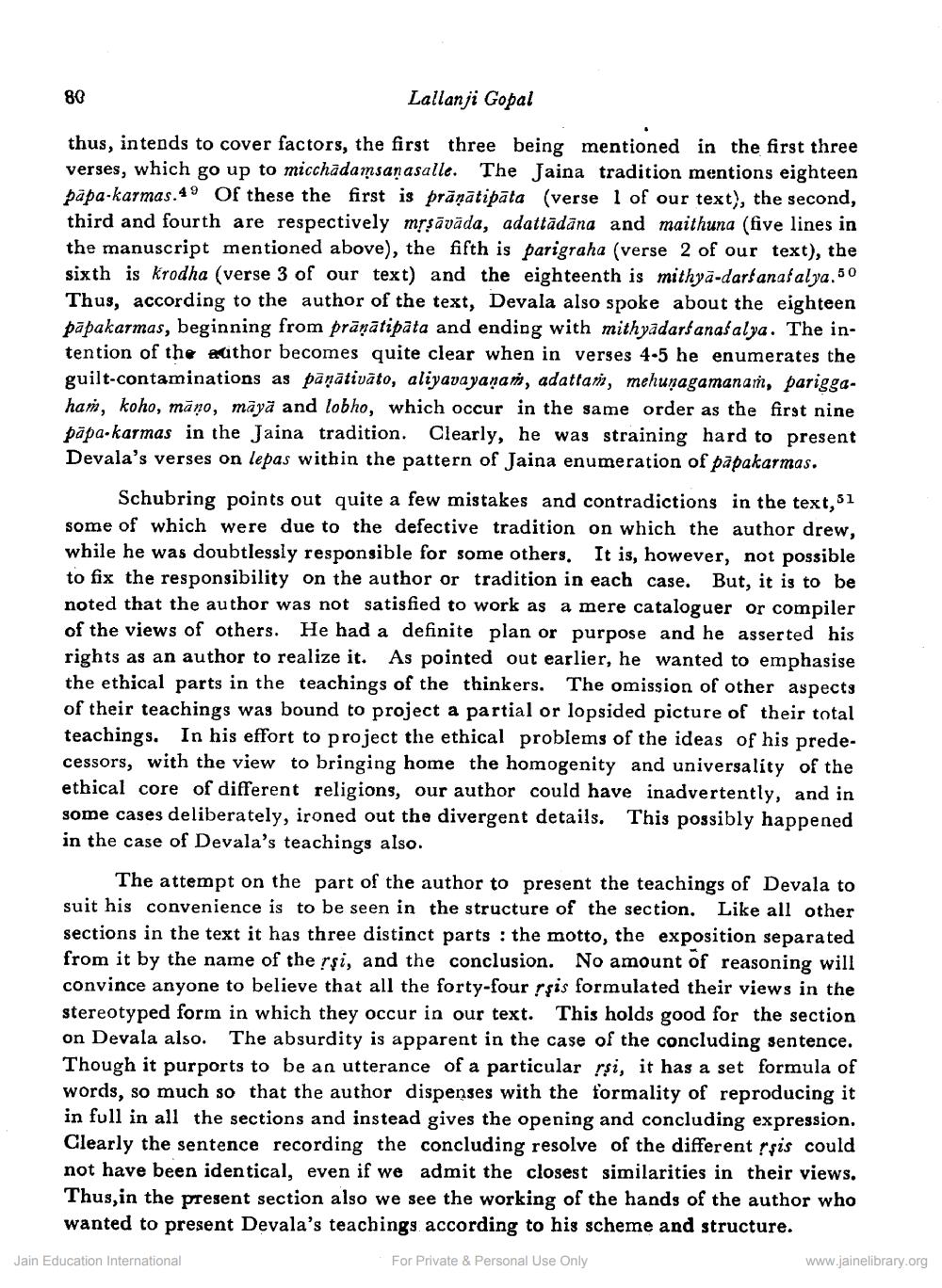Book Title: Asita Deval in Isibhasiyai Author(s): Lallan Gopal Publisher: Z_Aspect_of_Jainology_Part_3_Pundit_Dalsukh_Malvaniya_012017.pdf View full book textPage 7
________________ 80 Lallanji Gopal thus, intends to cover factors, the first three being mentioned in the first three verses, which go up to micchadamsanasalle. The Jaina tradition mentions eighteen papa-karmas.49 Of these the first is prāņātipāta (verse 1 of our text), the second, third and fourth are respectively mộşāvāda, adattādāna and maithuna (five lines in the manuscript mentioned above), the fifth is parigraha (verse 2 of our text), the sixth is krodha (verse 3 of our text) and the eighteenth is mithya-darśanaf alya.50 Thus, according to the author of the text, Devala also spoke about the eighteen pāpakarmas, beginning from prāņātipāta and ending with mithyadarśanas alya. The intention of the author becomes quite clear when in verses 4-5 he enumerates the guilt-contaminations as pāņātivāto, aliyavayanan, adattan, mehunagamanan, pariggaham, koho, mano, māyā and lobho, which occur in the same order as the first nine papa-karmas in the Jaina tradition. Clearly, he was straining hard to present Devala's verses on lepas within the pattern of Jaina enumeration of papakarmas. Schubring points out quite a few mistakes and contradictions in the text, 51 some of which were due to the defective tradition on which the author drew, while he was doubtlessly responsible for some others. It is, however, not possible to fix the responsibility on the author or tradition in each case. But, it is to be noted that the author was not satisfied to work as a mere cataloguer or compiler of the views of others. He had a definite plan or purpose and he asserted his rights as an author to realize it. As pointed out earlier, he wanted to emphasise the ethical parts in the teachings of the thinkers. The omission of other aspects of their teachings was bound to project a partial or lopsided picture of their total teachings. In his effort to project the ethical problems of the ideas of his predecessors, with the view to bringing home the homogenity and universality of the ethical core of different religions, our author could have inadvertently, and in some cases deliberately, ironed out the divergent details. This possibly happened in the case of Devala's teachings also. The attempt on the part of the author to present the teachings of Devala to suit his convenience is to be seen in the structure of the section. Like all other sections in the text it has three distinct parts: the motto, the exposition separated from it by the name of the rşi, and the conclusion. No amount of reasoning will convince anyone to believe that all the forty-four rşis formulated their views in the stereotyped form in which they occur in our text. This holds good for the section on Devala also. The absurdity is apparent in the case of the concluding sentence. Though it purports to be an utterance of a particular rsi, it has a set formula of words, so much so that the author dispenses with the formality of reproducing it in full in all the sections and instead gives the opening and concluding expression. Clearly the sentence recording the concluding resolve of the different rșis could not have been identical, even if we admit the closest similarities in their views. Thus, in the present section also we see the working of the hands of the author who wanted to present Devala's teachings according to his scheme and structure. Jain Education International For Private & Personal Use Only www.jainelibrary.orgPage Navigation
1 ... 5 6 7 8 9 10 11 12 13 14
